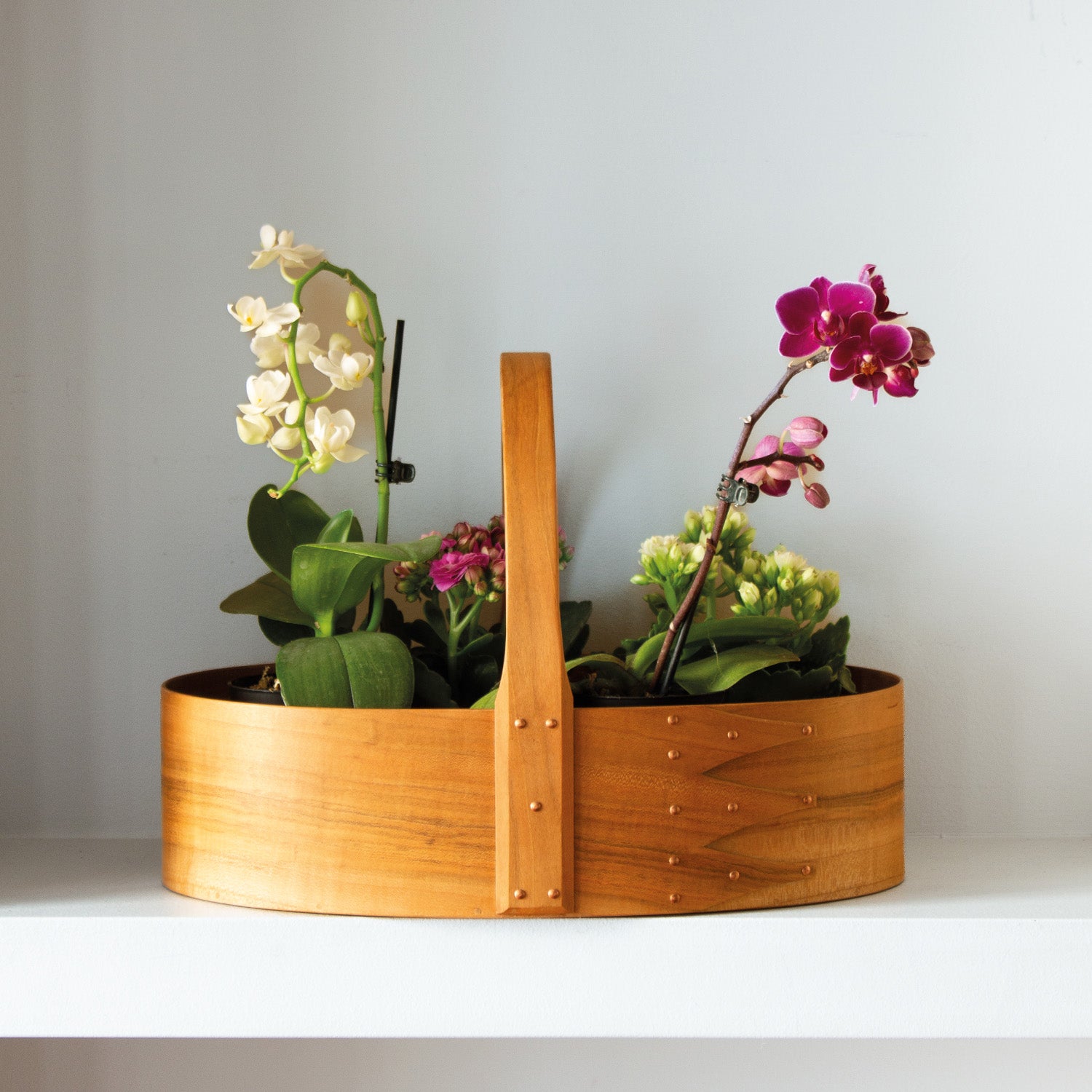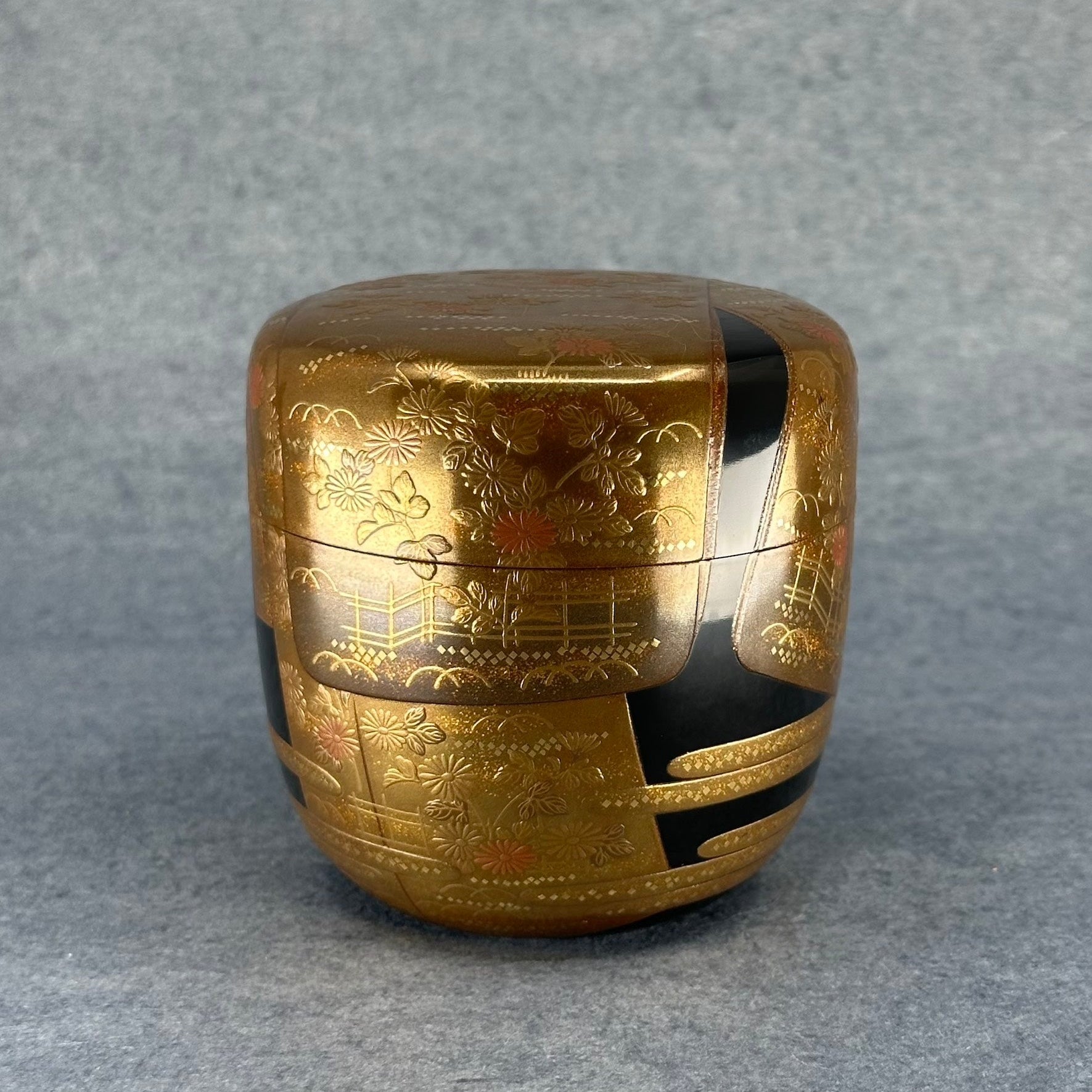




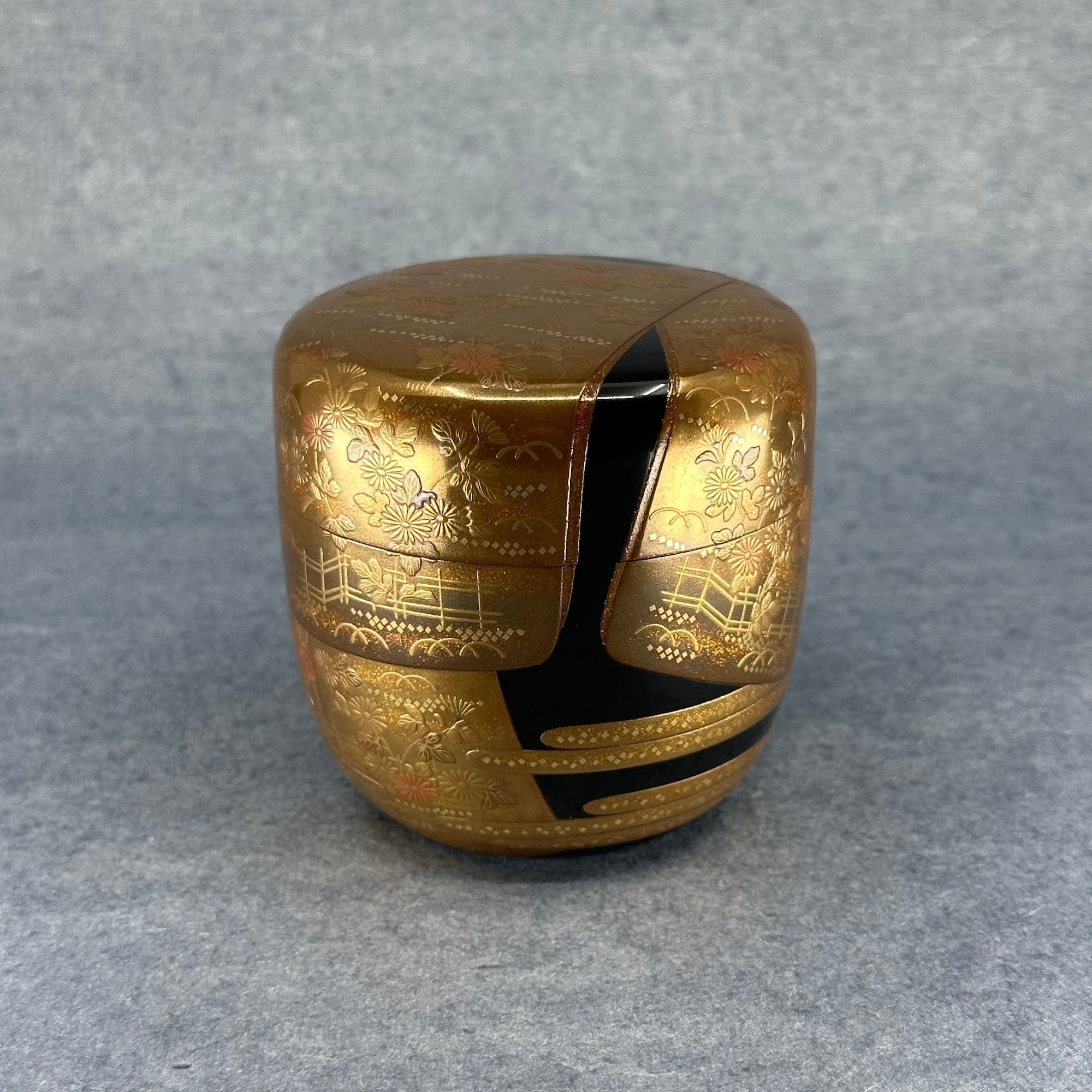
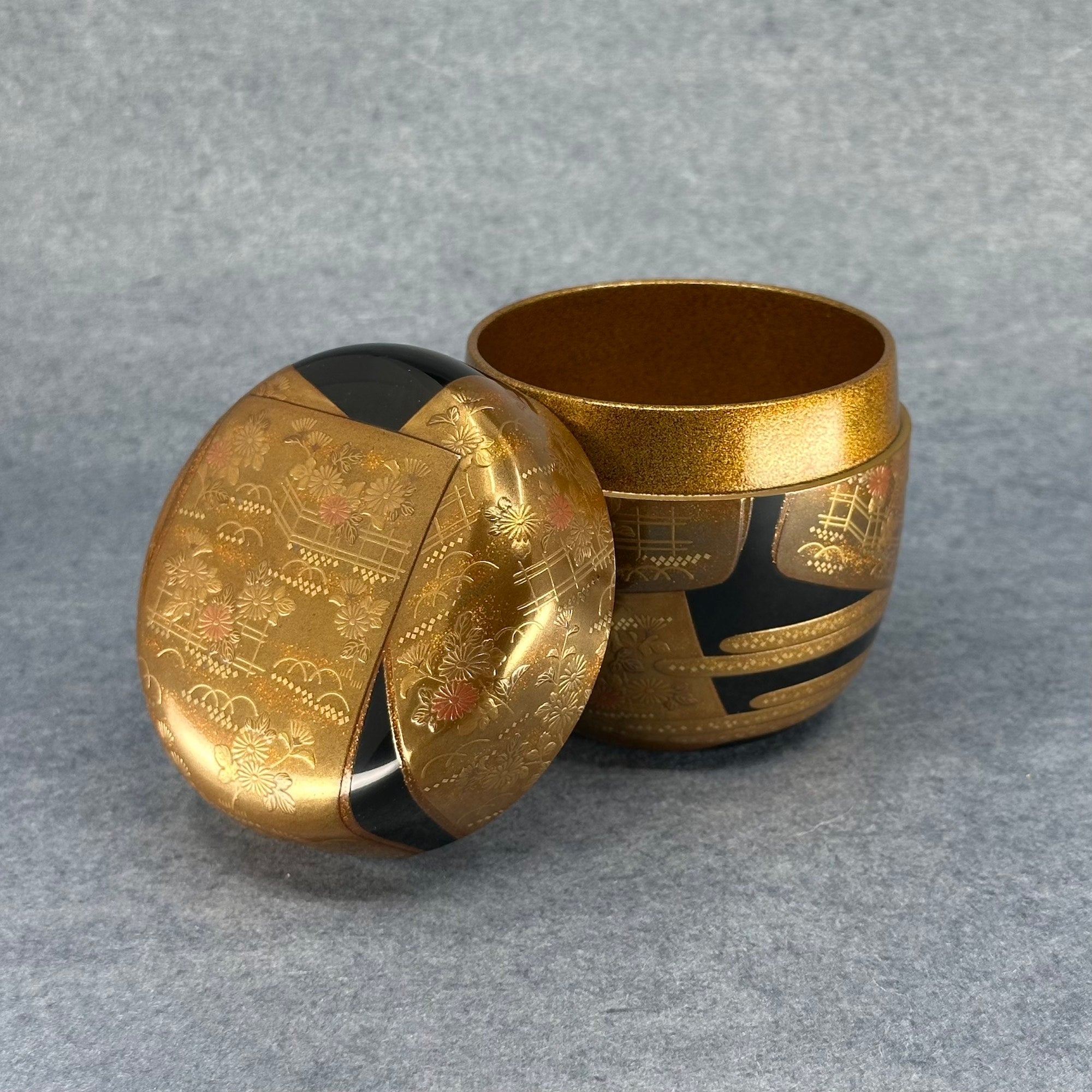


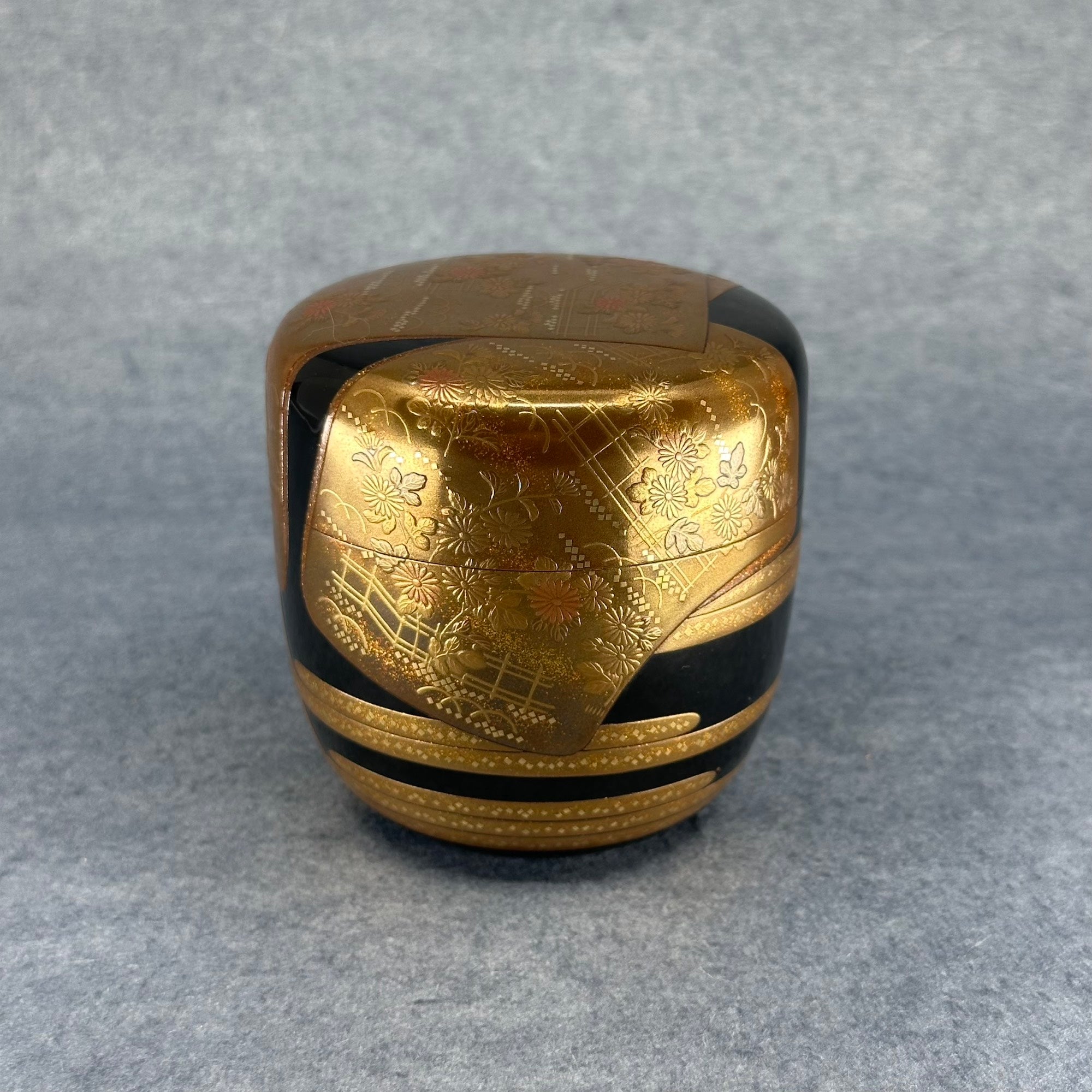
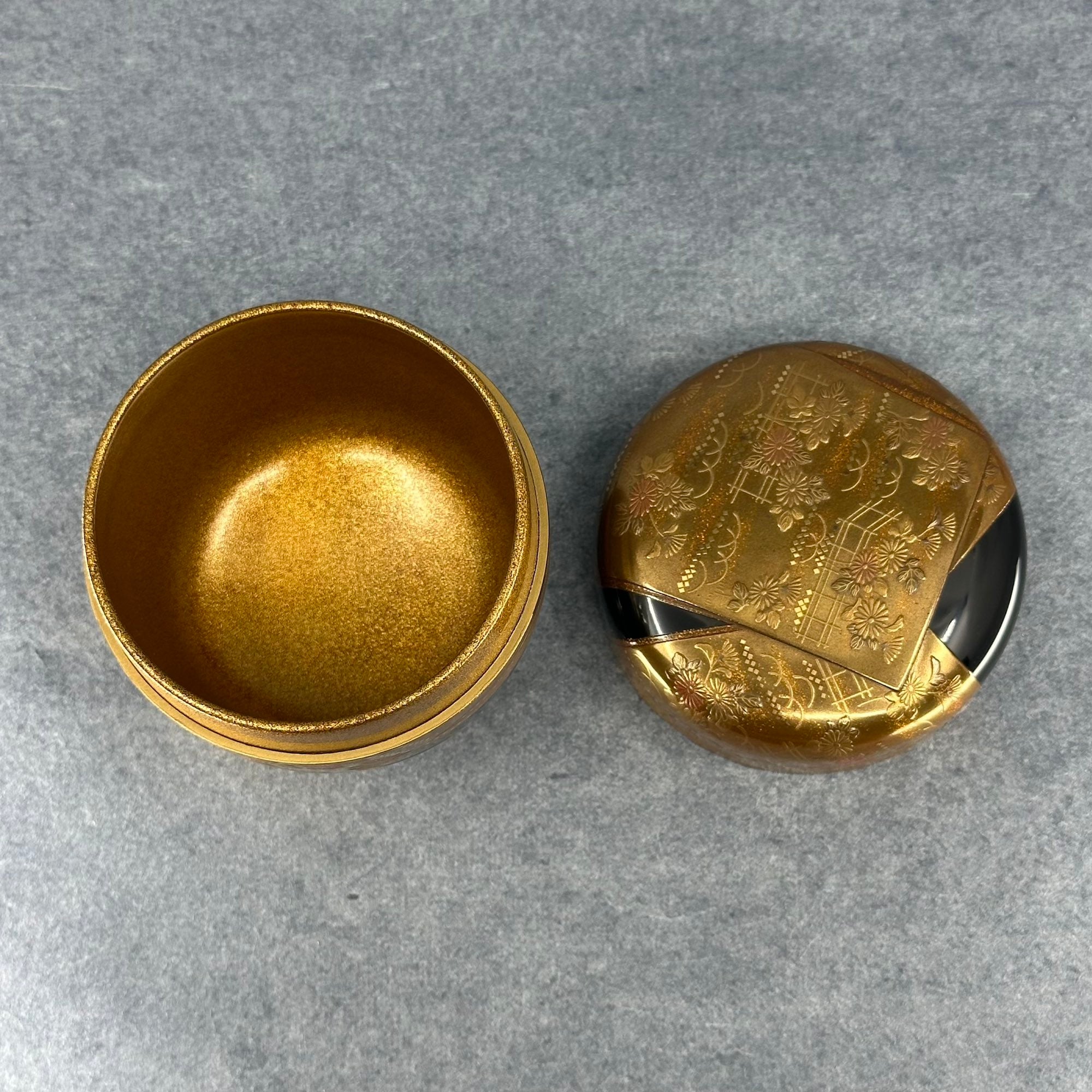
Natsume (Japanese tea caddy) in lacquer and gold, decorated with magaki-kiku patterns, by Tsuji Sekisai
This natsume (the tin in which matcha powder is placed during the Japanese tea ceremony) by Tsuji Sekisai is a piece of exquisite craftsmanship. On a lightweight wooden container entirely covered in deep black Japanese urushi lacquer, unfolds a sumptuous gold-powdered relief depicting a fully embroidered kimono. The contrast between the depth of the black and the luminosity of the gold lends the whole a sense of opulence and balance, highlighting the lacquerer's mastery and the harmony of the design.
Decor and techniques
The decoration, executed according to the maki-e tradition with gold dust, combines hiramaki-e (flat) for the grids and lines, taka maki-e (relief) for the modeling of the flowers, and kirikane (small gold squares) for the geometric punctuation. The background alternates between black lacquer with a mirror finish (roiro) and layers of gold dusted in the nashiji style (a shimmering background obtained by dispersing fine gold particles in the still-wet lacquer). The interior, lid and cup, is also decorated in nashiji. The chrysanthemum and branch fence motif, called magaki-kiku, evokes the peaceful beauty of autumn gardens, a symbol of longevity, elegance, and serenity. This theme, forming an elegant kimono on this natsume, is highly prized in Japanese art: it expresses the stability and harmony between cultivated nature and the passing of the seasons.
Form and use
This ōnatsume (large natsume) is used in the tea ceremony for usucha (lightly whipped tea). Its generous height and regular lines highlight the continuity of the decoration and the precision of the goldwork.
The craftsman
This natsume was crafted by Tsuji Sekisai II (1911–1972), a master lacquerer from Yamanaka Onsen in Ishikawa Prefecture. Heir to a lineage established in the 19th century, he distinguished himself through the quality of his maki-e (small wooden trays) and his ability to combine decorative refinement with the depth of lacquer. His works, often intended for tea schools, bear witness to a traditional craft passed down through generations. A leading figure in Yamanaka lacquerware, he contributed to the region's renown for the perfection of his pieces and the precision of his ornamentation.
Presentation
This natsume comes with a protective box made of paulownia wood (kiribako) tied with a cord (sanadahimo). The box bears the artist's signature and official seal, as well as a protective cloth (tomonuno) also bearing the artist's seal, all guaranteeing its authenticity.
Place of manufacture
Japan, Yamanaka Onsen, Ishikawa prefecture.
Dimensions
Diameter 7.9 cm – Height 7.9 cm
Weight
Natsume alone: 77g
Natsume and box: 211g
Materials
Wood, Japanese urushi lacquer, maki-e with gold powder
Period
Shōwa era (1926–1989)
Condition
Very good condition
KNOW-HOW
Natsume (棗) are small boxes with few variations in shape and dimensions (which are codified), and which are made of Japanese urushi lacquer, welcoming the matcha tea powder during the traditional Japanese tea ceremony (chanoyu and sadō). They are magnificent objects that can be used for tea or superb decorative pieces to collect and to position individually or grouped on a pretty tray or in a display case. Modern productions are more often made of resin and not lacquer, and of molded wood powder or plastic. We only offer authentic traditional natsume in real Japanese urushi lacquer made according to the rules of the art. These objects are rare and precious, they are likely to increase in value. Read our article on natsume >
Traditional Japanese lacquer, urushi, comes from the sap of the lacquer tree (Rhus Verniciflua), which flows after incision of the bark. It is a very precious material, a tree will give a maximum of 200ml of sap in its life, which is worked by specialized craftsmen. It takes many operations, slow and meticulous, and several months of work to bring real lacquer objects to life. It is the oldest craft in Japan! Initially used to protect and waterproof objects, this immutable craft has become an art of extreme sophistication. If you want to know more about the art of Japanese lacquer, you can read our dedicated article > .
DELIVERY
Delivery
Free delivery in mainland France for purchases over €200. Orders are generally dispatched within 2 working days, except in special cases, as indicated in the banner at the top of the website.
Precious items are wrapped in beautiful fabric, beautifully knotted according to the precious Korean art of pojagi. Some exceptions apply, especially if the items are large. Learn more >
Detailed delivery information is available via this link >
Your invoice will be sent by email
Payment methods
By card (Stripe operator): Visa, MasterCard, Discover, American Express.
Secure card payment with 3D Secure.
By PayPal, Apple Pay, Google Pay and Shop Pay
Returns and exchanges
14 days to change your mind.
CARE INSTRUCTIONS
Clean with a very soft cloth to avoid scratches, soaked in a little warm water if necessary (never soak your lacquer objects). No microwave, dishwasher, dryer. Do not expose to direct sunlight for a long time (risk of discoloration). If the atmosphere is very dry and very hot, and to avoid the risk of cracking, you can place a glass filled with water next to your lacquer object.
Choose options
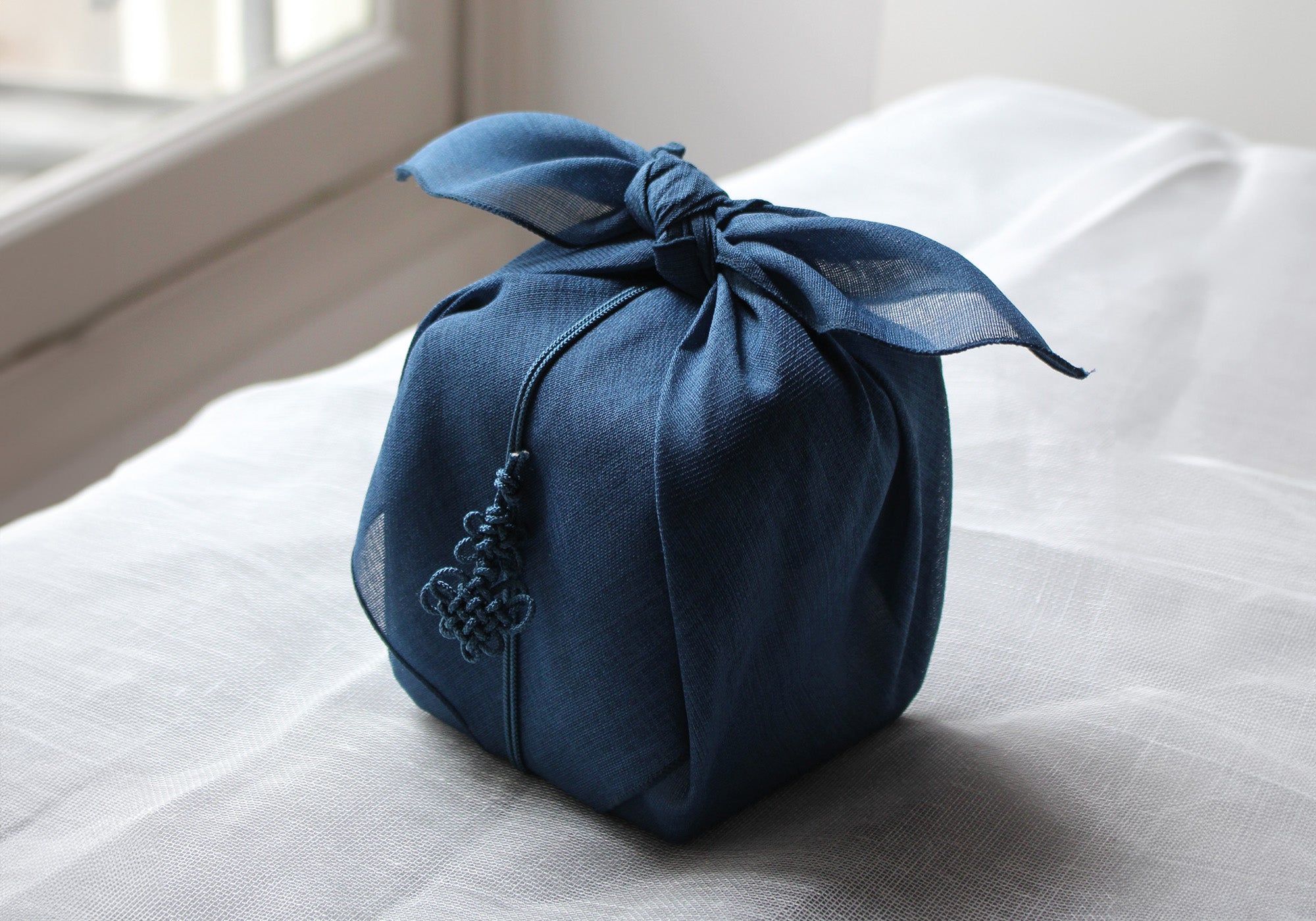
The art of wrapping
The exceptional items are wrapped in a beautiful fabric beautifully knotted using the little-known art of Korean pojagi and decorated with a delightful maedup (Korean ornamental knot). Details and conditions >





